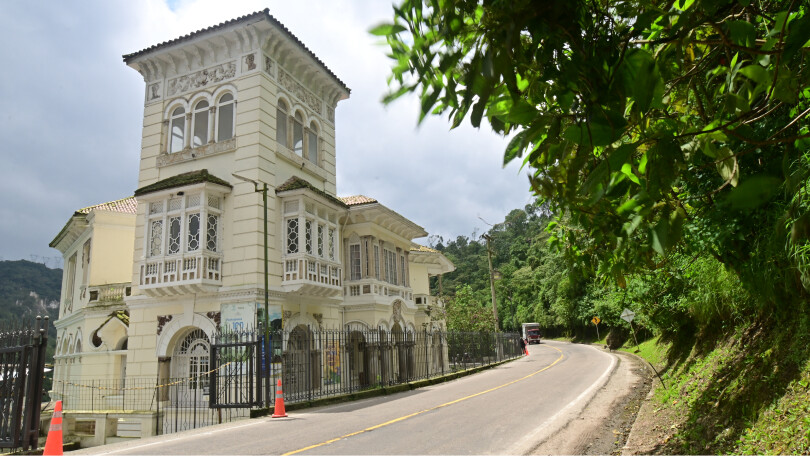Project

The Origin of the Idea
After more than a decade of staying in the territory and developing the first educational platform – the El Porvenir Farm Reserve – we decided to launch a complex campaign to recover the Tequendama Falls as a heritage site for Colombians.
To achieve this goal, we decided to transform the eternal companion of the Falls, that old building originally constructed as a train station and later abandoned, into the educational space that would allow us to share with both Colombian and foreign visitors the historical and cultural importance of the Tequendama Falls and the environmental services provided by its cloud forests. This space would also serve to make public the region's issues and find solutions to them.
Today, the Tequendama House Museum is a reality thanks to cooperation agreements with international organizations, and to the effort, enthusiasm, and selfless work of many volunteers of all ages and backgrounds.
The results have been very positive: the Tequendama Falls have returned to the news, and more and more tourists are visiting the place — not drawn by local ghost legends, but by the desire to learn more about biodiversity and culture.
First Steps Toward Restoration
Around the year 2009, the GEP Foundation managed to establish contact with the owners of the old Hotel del Salto to propose the initiative of restoring the building as the Tequendama House Museum – Biodiversity and Culture. After several months, the negotiation was finalized.
In 2011, restoration architect Claudia Hernández and her team generously donated their time and expertise to carry out the architectural survey of the house and to propose the museum project. Engineer Luis Guillermo Aycardi also joined the team, and thanks to his vast experience in structural matters, he conducted the necessary studies to reinforce the building’s structure.
At the same time, research was conducted on the history and background of the site, which uncovered key data for identifying the types of materials and elements that were part of the building’s original construction.
Thus, little by little, and with the help of these experts, the initial museum project began to take shape until it became a reality in 2016.
From Train Station to Museum
By the end of the 19th century, the Colombian government's efforts were focused on installing railway lines to connect all regions and boost national tourism. Due to the large number of tourists visiting the Tequendama Falls, the president at the time, General Pedro Nel Ospina, ordered the construction of the southern railway line to the Falls. The building was originally conceived to serve as a train station with hotel service and a view of the waterfall.
In 1912, the first draft of what would become the South Terminal was presented, and it was successfully built between 1923 and 1927. The railway station served train passengers until the mid-20th century. Shortly afterward, the house was turned into a restaurant, which quickly became known for its elegance and exclusivity, making it a favorite spot for Bogotá's high society.
The impressive structure, with around 1,470 square meters distributed over 5 levels, permanently closed its doors to the public around 1980 due to the high pollution of the Bogotá River.
After more than thirty years of complete abandonment, the house had fallen into a severe state of deterioration. Today, the Tequendama House Museum is visited by tourists from all over the country, curious to learn about the history of the place and its restoration.


